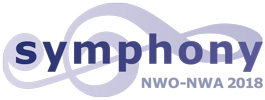The last couple of months we have been working on quantification of the relationship between desmopressin plasma concentration and Von Willebrand factor activity within the SYMPHONY consortium / workpackage 6 (OPTI-CLOT and To WiN studies). Desmopressin is the treatment of choice for the prevention and treatment of bleeding in patients with Von Willebrand disease. Recently published international guidelines recommend an intravenous desmopressin dose of 0.3 mcg/kg, with a maximum (capped) dose of 20-30 mcg [1,2]. This recommendation however is solely based on empirical evidence. The aim of our study was to investigate if, current treatment guidelines are adequate. We developed a pharmacokinetic-pharmacodynamic (PK-PD) model that quantifies the relationship between desmopressin plasma concentration and the Von Willebrand factor activity. We demonstrate that Von Willebrand factor activity increases by 424% after intravenous desmopressin administration. Simulations demonstrate that after 0.3 mcg/kg desmopressin intravenously, >90% patients with a Von Willebrand factor activity baseline of ≥0.20 IU/mL attain a Von Willebrand factor activity >0.5 IU/mL up to ≥4 hours after administration. In addition, in patients > 100 kg, a complete response was achieved after a capped dose of 30 mcg. In conclusion, simulations show that recently published international VWD guidelines advising an intravenous desmopressin dose of 0.3 mcg/kg with a capped dose of 30 mcg >100 kg gives a clinically relevant desmopressin response.
Michael Cloesmeijer (PhD WP06)
[1] Connell NT, Flood VH, Brignardello-Petersen R, Abdul-Kadir R, Arapshian A, Couper S, Grow JM, Kouides P, Laffan M, Lavin M, Leebeek FWG, O’Brien SH, Ozelo MC, Tosetto A, Weyand AC, James PD, Kalot MA, Husainat N, Mustafa RA. ASH ISTH NHF WFH 2021 guidelines on the management of von Willebrand disease. Blood Adv 2021; 5: 301–25.
[2] Furqan F, Sham R, Kouides P. Efficacy and safety of half-dose desmopressin for bleeding prophylaxis in bleeding disorder patients undergoing predominantly low to moderate risk invasive procedures. Am J Hematol John Wiley & Sons, Ltd; 2020; 95: E285–7
